Continuous Tracking of Targets for Stereoscopic HFSWR Based on IMM Filtering Combined with ELM
Abstract
1. Introduction
2. System Model
2.1. Interacting Input
2.2. Model Filtering
2.3. Updating Model Probability
2.4. Estimation Fusion
3. Long-Term Continuous Tracking Method
3.1. ELM Model
3.2. Feature Extraction
3.2.1. Average Velocity ()
3.2.2. Average Curvature ()
3.2.3. Ratio of the Arc Length to the Chord Length ()
3.2.4. Wavelet Coefficient
3.3. Procedure of the Tracking Method Based on an IMMEKF Combined with an ELM
4. Experiment Results
4.1. Simulation Experiment
4.1.1. Simulations Based on Different Combinations of Features
4.1.2. Simulations Based on Different Machine Learning Methods
4.1.3. Comparison between the Conventional TSA Algorithm and the Proposed Method
4.2. Field Experiment
5. Discussion
6. Conclusions
Author Contributions
Funding
Conflicts of Interest
References
- Grosdidier, S.; Baussard, A. Ship detection based on morphological component analysis of high-frequency surface wave radar images. IET Radar Sonar Navig. 2012, 6, 813–821. [Google Scholar] [CrossRef]
- Zhang, L.; You, W.; Wu, Q.M.; Qi, S.B.; Ji, Y.G. Deep learning-based automatic clutter/interference detection for HFSWR. Remote Sens. 2018, 10, 1517. [Google Scholar] [CrossRef]
- Pan, S.S.; Bao, Q.L.; Hou, W.B.; Che, Z.P. An improved track segment association algorithm using MM-GNN method. In Proceedings of the 2017 Progress in Electromagnetics Research Symposium Spring—(PIERS), St Petersburg, Russia, 22–25 May 2017; pp. 675–681. [Google Scholar]
- Raghu, J.; Srihari, P.; Tharmarasa, R.; Kirubarajan, T. Comprehensive track segment association for improved track continuity. IEEE Trans. Aerosp. Electron. Syst. 2018, 1, 2463–2480. [Google Scholar] [CrossRef]
- Bar-Shalom, Y. On the track-to-track correlation problem. IEEE Trans. Autom. Control. 1981, 26, 571–572. [Google Scholar] [CrossRef]
- Yeom, S.W.; Kirubarajan, T.; Bar-Shalom, Y. Track segment association, fine-step IMM and initialization with Doppler for improved track performance. IEEE Trans. Aerosp. Electron. Syst. 2004, 40, 293–309. [Google Scholar] [CrossRef]
- Zhang, S.; Bar-Shalom, Y. Track segment association for GMTI tracks of evasive move-stop-move maneuvering targets. IEEE Trans. Aerosp. Electron. Syst. 2011, 47, 1899–1914. [Google Scholar] [CrossRef]
- Aybars, T.; Ali, K.H. A fast track to track association algorithm by sequence processing of target states. In Proceedings of the 2018 21st International Conference on Information Fusion (FUSION), Cambridge, UK, 10–13 July 2018; pp. 1280–1284. [Google Scholar]
- Zhu, H.; Wang, C. Joint track-to-track association and sensor registration at the track level. Digit. Signal. Process. 2015, 41, 48–59. [Google Scholar] [CrossRef]
- Ashraf, M.A.; Murali, T.; Roberto, C. Fuzzy logic data correlation approach in multisensor–multitarget tracking systems. Signal. Process. 1999, 76, 195–209. [Google Scholar]
- Stubberud, S.C.; Kramer, K.A. Data association for multiple sensor types using fuzzy logic. In Proceedings of the IEEE Instrumentation & Measurement Technology Conference, Ottawa, ON, Canada, 17–19 May 2005; pp. 2154–2159. [Google Scholar]
- Shao, H.; Japkowicz, N.; Abielmona, R.S. Vessel track correlation and association using fuzzy logic and Echo State Networks. In Proceedings of the 2014 IEEE Congress on Evolutionary Computation (CEC), Beijing, China, 6–11 July 2014; pp. 2322–2329. [Google Scholar]
- Hong, S.X.; Peng, D.L.; Shi, Y.F. Track-to-track association using fuzzy membership function and clustering for distributed information fusion. In Proceedings of the 37th Chinese Control Conference, Wuhan, China, 25–27 July 2018; pp. 4028–4032. [Google Scholar]
- Siwei, L.; Wujie, Y.; Aijun, Z. Performance of feedback BP networks. J. Syst. Eng. Electron. 1995, 6, 11–18. [Google Scholar]
- Xie, J.; Zhou, J. Classification of urban building type from high spatial resolution remote sensing imagery using extended MRS and soft BP network. IEEE J. Sel. Top. Appl. Earth Obs. Remote Sens. 2017, 1, 3515–3528. [Google Scholar] [CrossRef]
- Liu, X.; Tang, J. Mass classification in mammograms using selected geometry and texture features, and a new SVM-based feature selection method. IEEE Syst. J. 2014, 8, 910–920. [Google Scholar] [CrossRef]
- Pal, M.; Mather, P.M. Support vector machines for classification in remote sensing. Int. J. Remote Sens. 2005, 26, 1007–1011. [Google Scholar] [CrossRef]
- Lu, X.; Zou, H.; Zhou, H.; Xie, L.; Huang, G.B. Robust extreme learning machine with its application to indoor positioning. IEEE Trans. Cybern. 2016, 46, 194–205. [Google Scholar] [CrossRef] [PubMed]
- Huang, G.B.; Wang, D.H.; Lan, Y. Extreme learning machines: A survey. Int. J. Mach. Learn. Cybern. 2011, 2, 107–122. [Google Scholar] [CrossRef]
- Levine, S.; Pastor, P.; Krizhevsky, A.; Quillen, D. Learning hand-eye coordination for robotic grasping with deep learning and large-scale data collection. Int. J. Robot. Res. 2016, 1, 173–184. [Google Scholar] [CrossRef]
- Shin, H.C.; Roth, H.R.; Gao, M.C.; Lu, L.; Xu, Z.; Nogues, I.; Yao, J.H.; Mollura, D.; Summers, R.M. Deep convolutional neural networks for computer-aided detection: CNN architectures, dataset characteristics and transfer learning. IEEE Trans. Med. Imaging 2016, 35, 1285–1298. [Google Scholar] [CrossRef] [PubMed]
- Zhang, L.; Jiang, Y.; Li, Y.S.; Li, G.S.; Ji, Y.G. Adaptive maneuvering target tracking with 2-HFSWR multisensor surveillance system. IEEE Aerosp. Electron. Syst. Mag. 2017, 32, 70–76. [Google Scholar] [CrossRef]
- Bahar, E.; Kurt, G.K. Location estimation in multi-carrier systems using extended Kalman based interacting multiple model and data fusion. In Proceedings of the 2011 IEEE Symposium on Computers and Communications (ISCC), Kerkyra, Greece, 28 June–1 July 2011; pp. 469–471. [Google Scholar]
- Huang, G.B.; Zhu, Q.Y.; Siew, C.K. Extreme learning machine: A new learning scheme of feedforward neural networks. In Proceedings of the 2004 IEEE International Joint Conference on Neural Networks, Budapest, Hungary, 25–29 July 2004; pp. 489–501. [Google Scholar]
- Huang, G.B.; Zhu, Q.Y.; Siew, C.K. Extreme learning machine: Theory and applications. Neurocomputing 2006, 70, 489–501. [Google Scholar] [CrossRef]
- Zong, W.; Huang, G.B. Face recognition based on extreme learning machine. Neurocomputing 2011, 74, 2541–2551. [Google Scholar] [CrossRef]
- Rong, H.J.; Huang, G.B.; Sundararajan, N. Online sequential fuzzy extreme learning machine for function approximation and classification problems. IEEE Trans. Syst. Man Cybern. Part B 2009, 39, 1067–1072. [Google Scholar] [CrossRef] [PubMed]
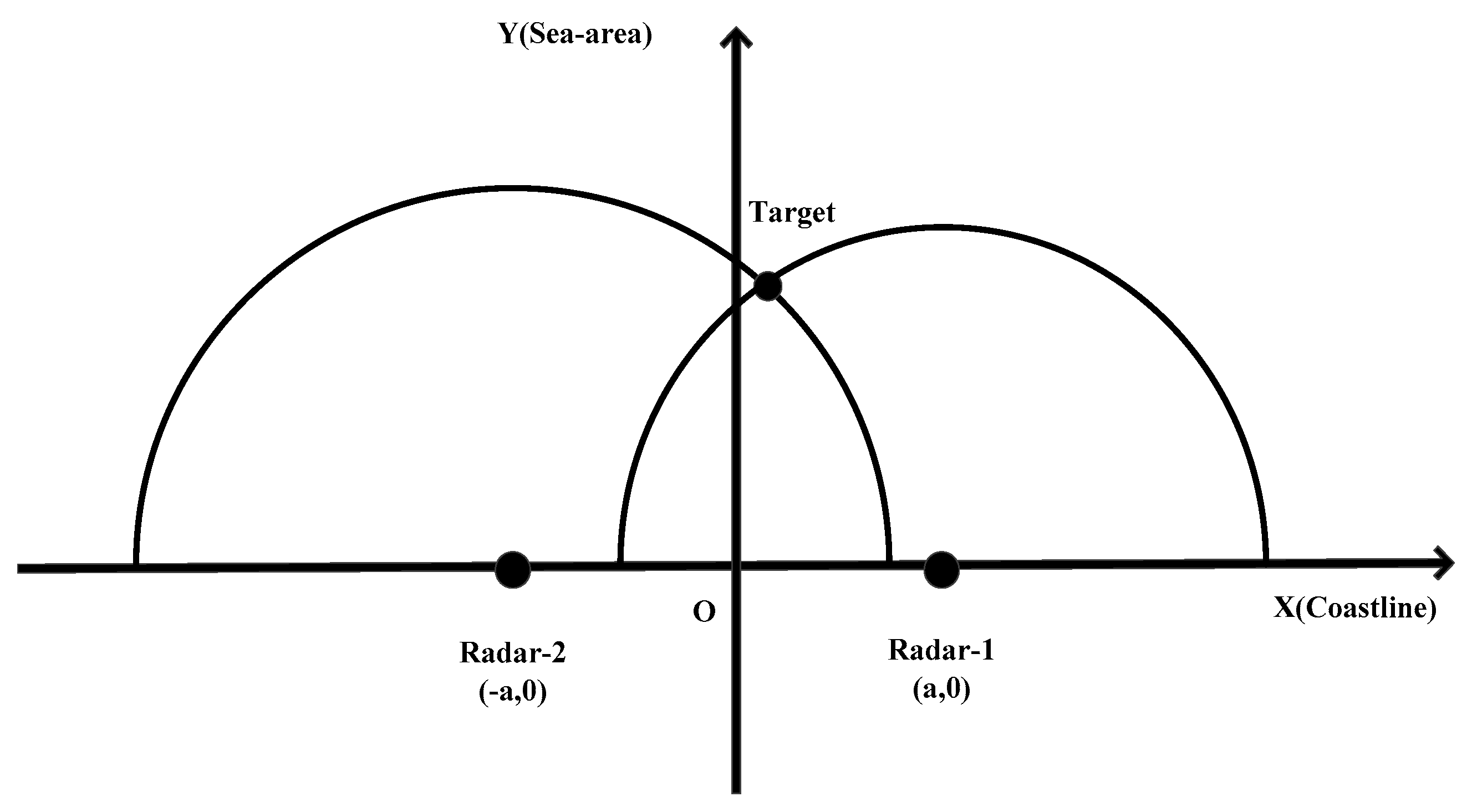
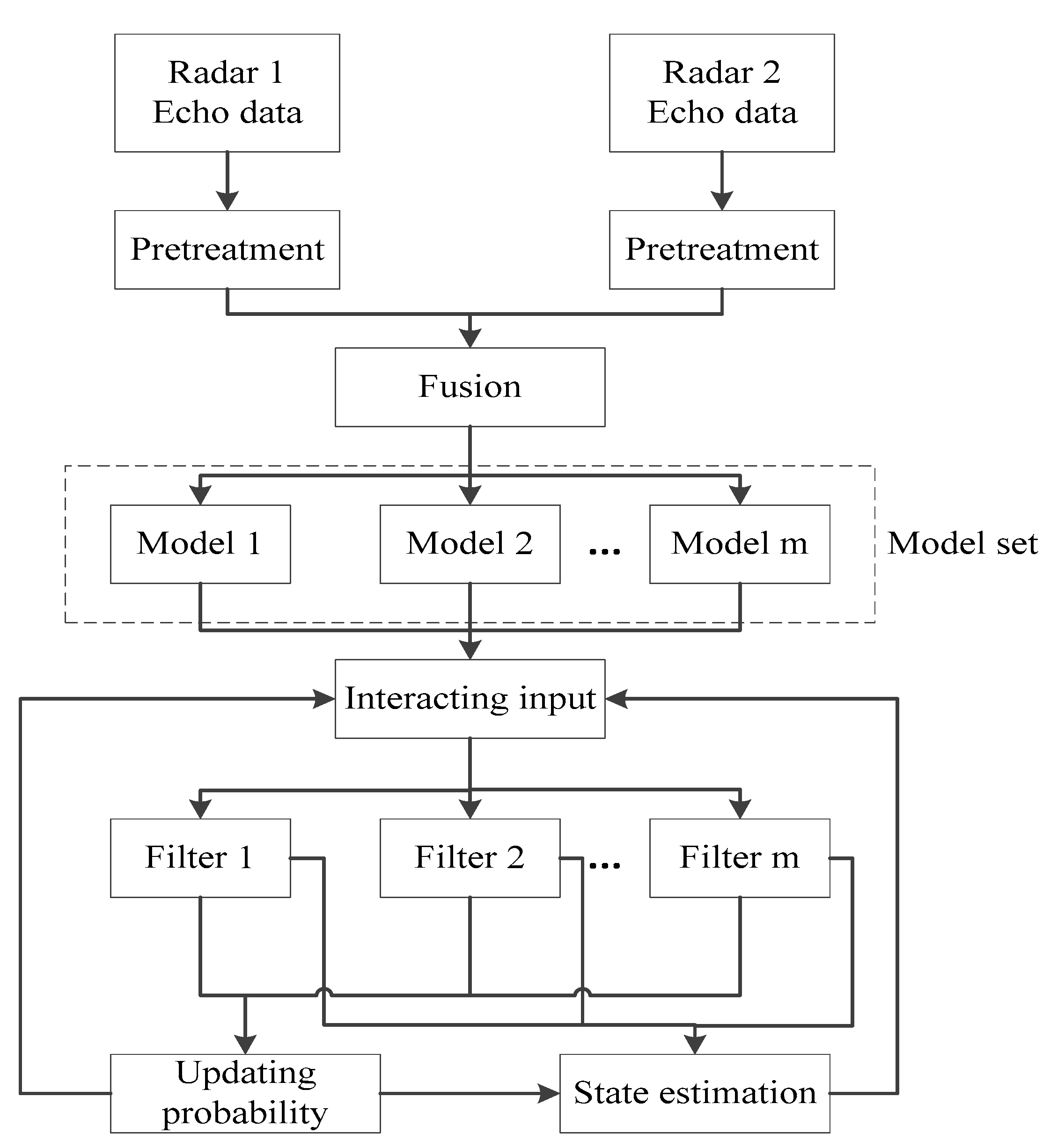
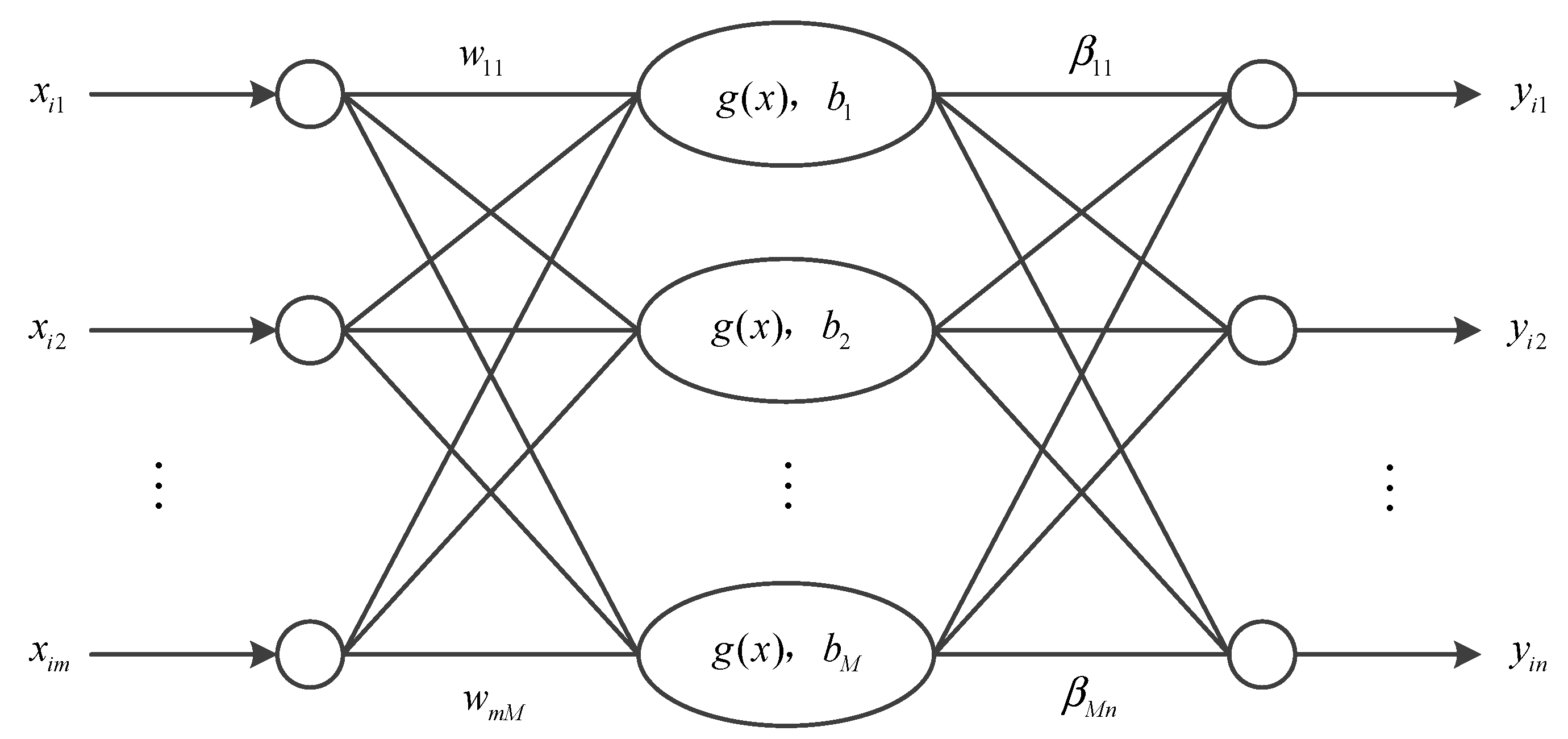


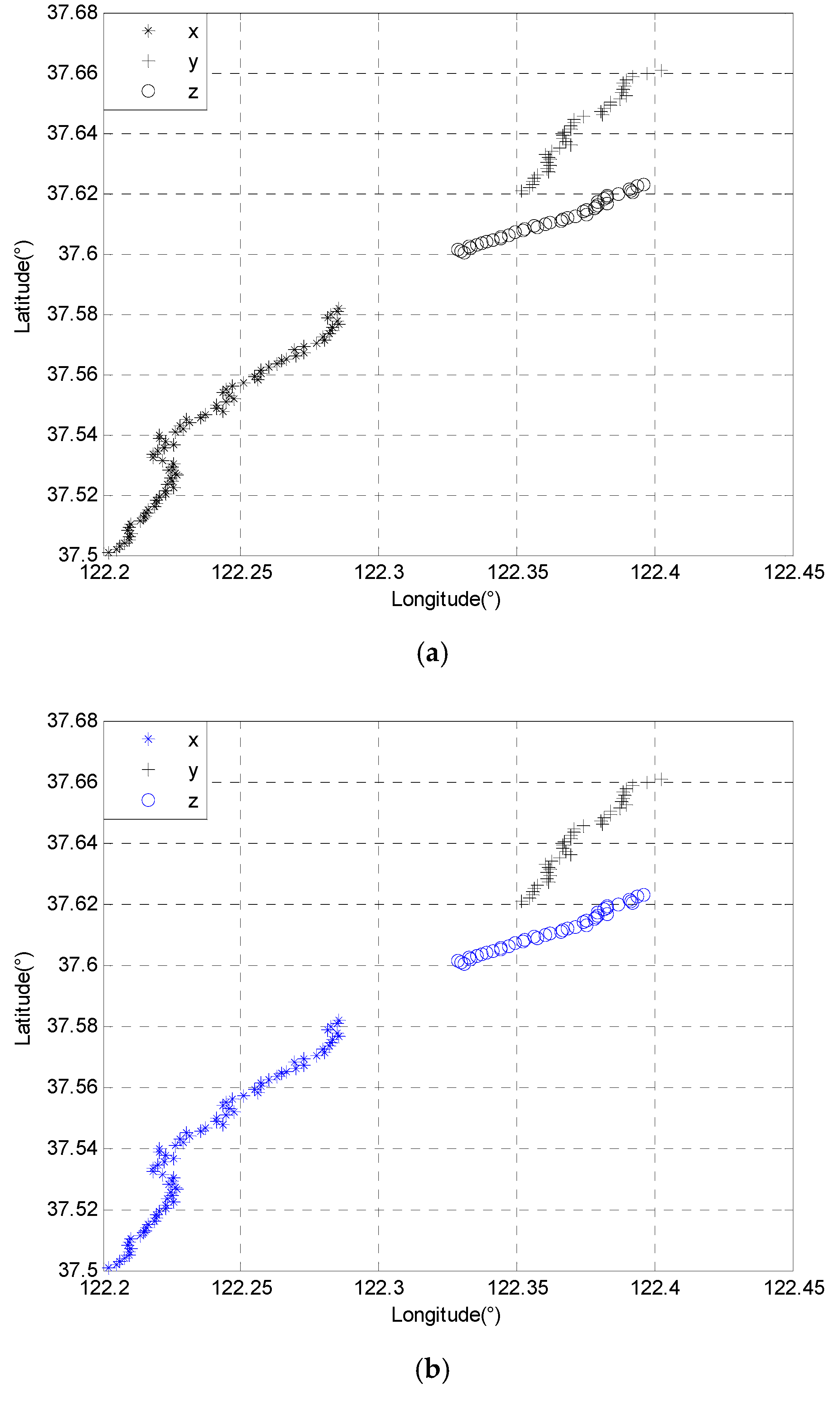
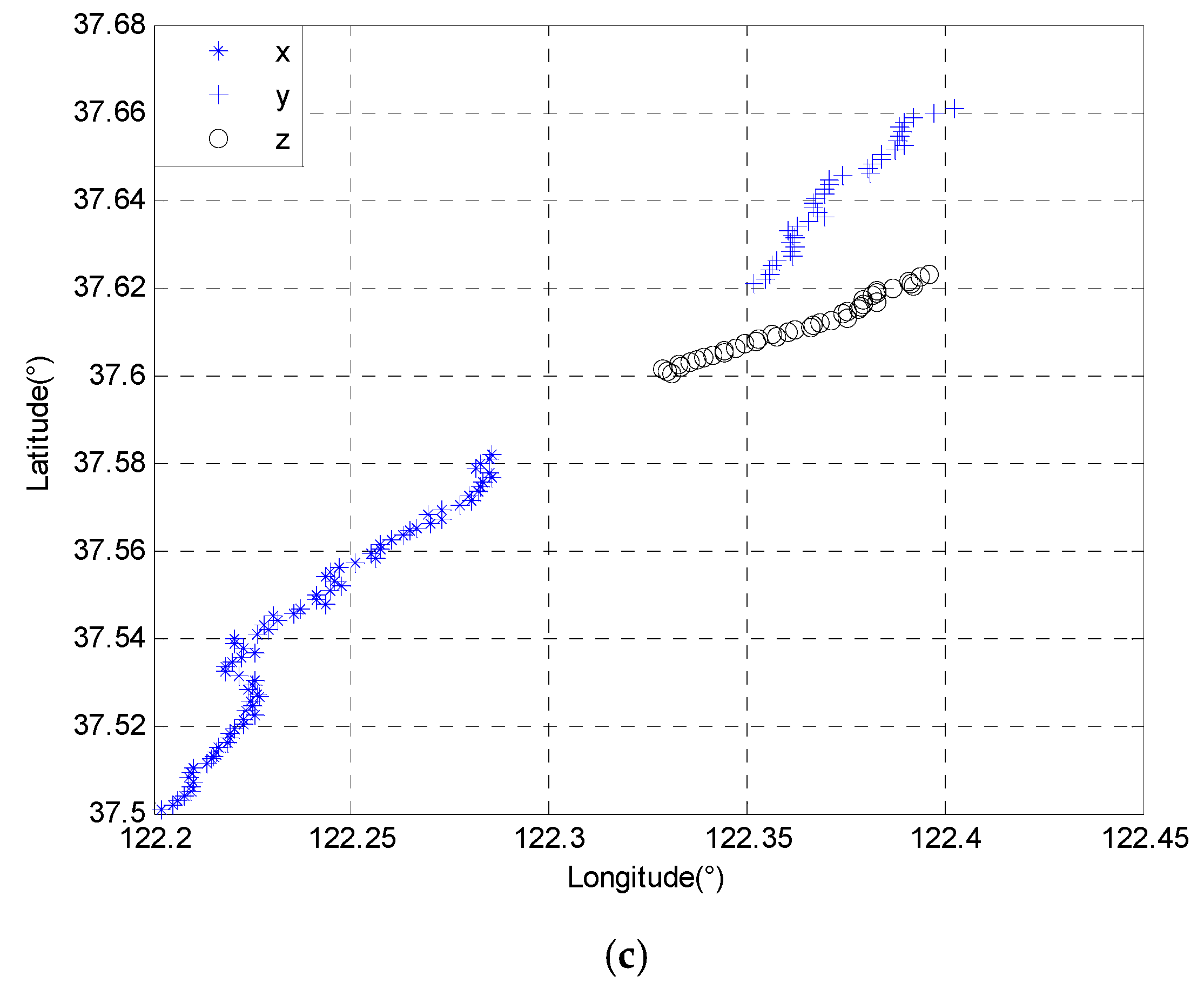
| ,,, | |||
|---|---|---|---|
| Rt | 92.5 | 89.3 | 94.7 |
| Rf | 6.7 | 9.8 | 4.6 |
| Rn | 0.8 | 0.9 | 0.7 |
| ELM | BP | SVM | |
|---|---|---|---|
| Rt (%) | 94.7 | 82.3 | 89.7 |
| Rf (%) | 4.6 | 16.8 | 9.5 |
| Rn (%) | 0.7 | 0.9 | 0.8 |
| Time (ms) | 684 | 5103 | 1568 |
| Conventional TSA Algorithm | Proposed Method | |
|---|---|---|
| Rt | 76.5 | 94.7 |
| Rf | 12.1 | 4.6 |
| Rn | 11.4 | 0.7 |
| Conventional TSA Algorithm | Proposed Method | |
|---|---|---|
| Rt | 69.5 | 91.2 |
| Rf | 13.1 | 8.1 |
| Rn | 17.4 | 0.7 |
© 2020 by the authors. Licensee MDPI, Basel, Switzerland. This article is an open access article distributed under the terms and conditions of the Creative Commons Attribution (CC BY) license (http://creativecommons.org/licenses/by/4.0/).
Share and Cite
Zhang, L.; Mao, D.; Niu, J.; Wu, Q.M.J.; Ji, Y. Continuous Tracking of Targets for Stereoscopic HFSWR Based on IMM Filtering Combined with ELM. Remote Sens. 2020, 12, 272. https://doi.org/10.3390/rs12020272
Zhang L, Mao D, Niu J, Wu QMJ, Ji Y. Continuous Tracking of Targets for Stereoscopic HFSWR Based on IMM Filtering Combined with ELM. Remote Sensing. 2020; 12(2):272. https://doi.org/10.3390/rs12020272
Chicago/Turabian StyleZhang, Ling, Dongwei Mao, Jiong Niu, Q. M. Jonathan Wu, and Yonggang Ji. 2020. "Continuous Tracking of Targets for Stereoscopic HFSWR Based on IMM Filtering Combined with ELM" Remote Sensing 12, no. 2: 272. https://doi.org/10.3390/rs12020272
APA StyleZhang, L., Mao, D., Niu, J., Wu, Q. M. J., & Ji, Y. (2020). Continuous Tracking of Targets for Stereoscopic HFSWR Based on IMM Filtering Combined with ELM. Remote Sensing, 12(2), 272. https://doi.org/10.3390/rs12020272







